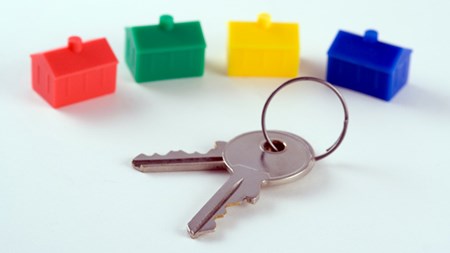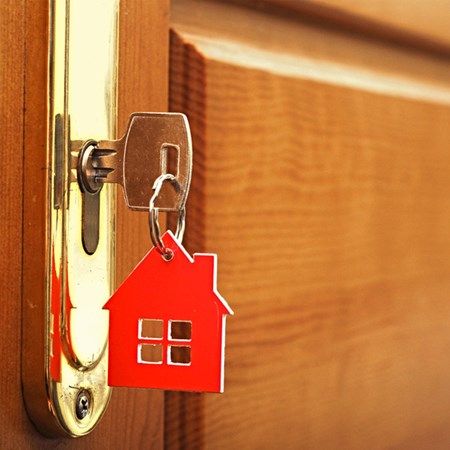First things first
What is a First-Time Buyer?
Buying your first home is an exciting time, but there are a host of potential pitfalls to consider when searching for your first property.
First-time buyers’ status isn’t as simple as knowing if you have bought a house previously or not - there are a few more questions that you should consider to help determine your eligibility.
It’s essential that you understand your status, especially if you want to take advantage of any first-time buyer schemes. In this guide, you’ll find everything you need to know about buying your first home in Scotland, including where to find a property solicitor to help you on your home buying journey.
The help of a good property solicitor is one of the most important aspects of buying your first home. Once you’ve read the guide, be sure to review our list of members, all of whom are property solicitors. They are there to help you with finding and purchasing your first home.
You’re considered a First-Time Buyer in Scotland if:
- You’ve never owned a home (or a part share of a home) previously, anywhere in the world, and are looking to purchase a home for yourself.
- You own only commercial property, such as a shop or pub with no living space.
- You’ve never owned a home anywhere in the world, and you are looking to purchase a buy-to-let property.
You’re not a First-Time Buyer if:
- You are buying a property with a partner, and one of you owns or has previously owned a home, anywhere in the world.
- You have inherited a property, even if you have never lived in it.
- You own or have owned commercial property with a living space.
- You are having your property bought for you by someone else that already owns a home (i.e. the home will be in their name)

Is buying a house right for you?
For many, owning their own home is a priority. Having a property to your name doesn’t just seem like a good investment but makes you feel like you’ve accomplished something significant. However, not everyone is able or should make the commitment to buy a house, and you should ask yourself the question:
Is buying a house right for me?
Below we've outlined the advantages and disadvantages of buying and renting and some further questions to ask yourself to determine what is best for your own situation.
Advantages of Buying A House
- Monthly mortgage payments contain elements of capital repayment, increasing your “stake” in the value.
- Mortgage payments can compare very favourably with monthly rent.
- Mortgage payments will reduce your debt as you go, raising the equity you have in your home and increasing the amount you can have available as a deposit if you move to a new house.
- Homes can increase in value over time, increasing the value of the equity you own.
- A permanent home for you (and your family).
- Full control over home improvements and upgrades.
- Can increase credit scores.
- Ability to alter/extend to improve your living environment.
Disadvantages of Buying A House
- Responsibility. Need to maintain, repair and renew where necessary.
- Cost of acquisition will include cost of legal fees, vat, LBTT and fees payable to the Land Register. LBTT can be a significant add on.
- Requirement for a deposit, typically 10% of property valuation.
- Houses can go down in value as well as up. For example, in Aberdeen, and the N.E. over the last 50 years, while there have been ups and downs the trend is an overall increase.
- Process can be stressful, involving many matters to be considered.
- Council Tax is buyer’s responsibility.
- Maintenance and repair costs are up to the owner.
- Typically, a medium/long-term investment.
Advantages of Renting a Home
- Fewer upfront costs - although there may be a deposit to pay.
- Utilities may be included in rent.
- No long-term commitment. You can move relatively easily if you do not like the property or the neighbourhood.
- Testing a new relationship is simpler in rented accommodation.
- You may not have to buy furniture depending on the property.
- Landlord pays repair and maintenance costs, in most cases.
- Rental insurance is inexpensive, you will only have to pay for contents insurance.
Disadvantages of Renting a Home
- Less stability - the Landlord can decide to change the rent and you are not guaranteed to be renewed as a tenant.
- Landlord has control on pets and property improvements.
- Renting does not build equity.
- A Landlord can sell the property, with the lease to a new, unknown landlord.
- Delays can happen at the end of your lease when regaining your deposit.
- No control over repairs or maintenance. In the hands of the Landlord. There can be delays.
- Landlord inspections may be required.

Questions to ask before you decide to start saving:
- Do you need flexibility in this stage of life?
-
- If yes, meaning you need enough money for unexpected costs and bills, then maybe now is not the best time to save.
- If no, and you can put money away every month without any issues, then now is a good time to save.
- Do you value security?
-
- If yes, meaning you prefer to be in control of your own home and finances, then now is a good time to save
- If no, and you don’t mind the insecurity of renting from someone else, then maybe now is not the best time to save.
- Are you likely to inherit property soon?
-
- If yes, meaning you may have unexpected costs to consider with a new property, then maybe now is not the best time to save.
- If no, and there is no expectation you will inherit any property soon, then now is a good time to save.
- Do you have the savings required to maintain a property should something go wrong after you buy?
-
- If you have enough money saved for unforeseen circumstances that may arise with your new home like maintenance and repairs, then now is a good time to continue saving to have a bigger safety net or look to buy your first home.
- If you will only have enough money saved for the initial deposit and nothing after, then you should continue to save to ensure you have all the money you need to look after your home after you buy.
- Can you afford the regular costs of property?
-
- If yes, meaning you have enough saved or have a stable enough income to rely on money coming in for ongoing costs, then now is a good time to continue saving to have a bigger safety net or look to buy your first home.
- If no, and you will only have enough money saved for the initial deposit and nothing after, then you should continue to save to ensure you have all the money you need to look after your home after you buy.

How big a mortgage can I get?
Mortgages can be available in Scotland up to 95% Loan-to-value, meaning you would only have to save 5% of the property’s cost for the initial deposit. Although a 5% deposit means you can buy your house sooner, the average deposit in Scotland sits at around 10% as saving for a bigger mortgage deposit is viewed as less risky, provides cheaper monthly repayments, and has a better chance of being accepted. It may very well open up a wider range of mortgage products, to choose from.
However, we understand that even with a reasonable mortgage, it can still be a struggle to have enough money to buy your first home. Luckily there is some help available to get you started on your property journey.
First-Time Buyer help in Scotland
For many, saving for a deposit can be a challenging time. Every year, first-time buyers across the country struggle to place their feet on the property ladder, but support is available to help you purchase your first home. The Scottish Government currently have two schemes to help first-time buyers and other priority groups.
The Open Market Shared Equity (OMSE) & The New Supply Shared Equity (NSSE) Schemes
These two schemes are very similar as they both allow those on low to moderate incomes to buy their first house without funding the entire cost. These Scottish Government schemes provide applicants with up to 40% of the property cost, meaning the applicant could pay only 60% of the property cost.
The buyer will be registered as the proprietor in the Land Register of Scotland. There will, however, in addition to any security for a mortgage lender, be a security registered in the name of the Scottish Government to protect their share.
The need to knows:
- The buyer only pays between 60-90% of the house cost.
- Buyer receives ‘complete title’ and name on the Land Certificate.
- Applicants must be able to prove they are on a low to moderate income.
- Applicants can’t buy a home that is over a specific ‘maximum threshold’ price.
- If you choose to sell the house, you will be required to give a share of the money back to the Scottish Government.
External link
Label: Find more details of the Open Market Shared Equity (OMSE) scheme here:
Url: https://www.mygov.scot/open-market-shared-equity-scheme
External link
Label: Find more details of the New Supply Shared Equity (NSSE) Scheme here:
Url: https://www.mygov.scot/new-supply-shared-equity-scheme
Differences between OMSE & NSSE
The key difference between The Open Market Shared Equity (OMSE) & The New Supply Shared Equity (NSSE) Schemes is the type of property that each scheme entitles you to purchase. The OMSE can only be used to buy properties on the ‘open market’, whereas the NSSE can only be used to buy a new build home. Most other details of both schemes are the same; however, this distinction is important to remember when deciding which scheme to apply for.
Scottish First Home Fund
The First Home Fund was set up to give first-time buyers the opportunity of getting up to £25,000 towards the cost of their first home for both existing properties and new builds. However, this Fund is now closed and will not be reopened.
Help to buy ISA and Lifetime ISA
Help to Buy ISA is no longer available, but Lifetime ISA is available and can be of help in saving for your first home or saving for later in life.
LBTT: Stamp Duty for First-Time Buyers in Scotland
Stamp Duty vs. Land and Building Transaction Tax
Before 1st April 2015, when purchasing a property in Scotland, buyers had to pay stamp duty on their transaction. However, since 2015 this tax has been altered and given a new name - Land and Building Transaction Tax (LBTT).
What is LBTT?
LBTT is the Scottish replacement for stamp duty. It is a tax on transactions, where stamp duty was a tax on documents. LBTT is a tiered system and the value of the transaction (usually the price paid) will determine the amount of LBTT you will have to pay. However, first-time buyers are offered partial relief on purchases below a maximum value threshold, currently, £175,000. (The “normal” threshold for non first time buyers is £145,000.) The maximum relief available, at present, is £600.
LBTT For First-Time Buyers
Since LBTT is a tiered tax system, there are certain thresholds that buyers should be aware of. First-time buyers are given relief on LBTT charges for properties up to £175,000, meaning they do not need to pay LBTT on the cost of their first home, if the value of the transaction is £175,000 or less.
If a first-time buyer’s home costs more than £175,000, they will receive relief on the value of the transaction up to £175,000 but will have to pay LBTT on the portion of the value exceeding £175,000.
For example, the average price of a property in the NE of Scotland is around £200,000 - £210,000. Let’s assume a purchase at £210,000 by a first-time buyer.
A first-time buyer, entitled to the relief, will pay LBTT on the amount from £175,001 to £210,000 (£34,999). Between £145,001 and £250,000 the rate of tax is 2%. The tax payable is, therefore, £700.
First-Time Buyer Thresholds can be seen below:
- Nothing (Tax-free) up to £175,000
- £175,001-£250,000 you’ll pay 2% on the value over £175,001 and up to £250,000
- £250,001-£325,000 you’ll pay 5% on the value over £250,001 and up to £325,000
- £325,001-£750,000 you’ll pay 10% on the value over £325,001 and up to £750,000
- £750,000+ you’ll pay 12% on the value over £750,001
Unsure how much you should be paying in LBTT? Try our LBTT calculator here.
How much will you need to save for a deposit?
If you’re considering buying your own home for the first time, you probably have concerns about how much you need to save before putting down a deposit. So, we’ve provided a useful example below to help you calculate how much you might need to save to buy the home that you’ve dreamed of.
Example of average deposit amount for £200,000 home
A couple of first-time buyers are looking to start saving for a home in Aberdeen that costs £200,000. They are unsure how much they should save for their deposit; however, they know that they qualify for LBTT relief and have found out that they can get a 90% loan-to-value mortgage.
Therefore, the couple will need to pay a deposit of 10% of the cost of the property, meaning a total deposit of £20,000 to purchase their first house.
On a combined salary of £60,000 between the two of them, their total savings time will depend on the amount they are willing to save per month. Calculations based on this example can be seen below.
How long does it take to save for a deposit?
| Monthly Savings (based on £60,000) | Length Of Time For £20,000 Deposit Goal |
| 10% | 3 Years 4 Months |
| 20% | 1 Year 8 Months |
| 30% | 1 Year 2 Months |
| 40% | 10 Months |

Tips on how to save for a deposit
We understand that saving for a deposit, especially for first-time buyers, may seem like an impossible task. With that in mind, we have provided some tips on saving and reducing the time it will take to enter your new home.
- Set up a standing order
Don’t just rely on your own memory to put money away each month for your deposit goal. Setting up a standing order a few days after payday will ensure you don’t forget to save each month and will make sure money automatically gets transferred into your savings accounts. - Keep a spending diary to track what you’re spending
We all love to treat ourselves from time to time but saving up to buy a house requires a lot of commitment and good budget control. Make sure to look at what you’re spending and see if you can cut costs whether it be from phone bills, grocery store treats, non-essential transport, eating out, and subscriptions etc. Many mobile banking apps offer this facility. - Change Savings account
If you don’t feel you’re getting enough interest or perks on your current savings account, have a look for a new ISA or savings account that will provide you with additional or improved benefits to saving each month. - Sell unwanted or unused items
We all have some items kicking around our homes that we either don’t need anymore or don’t use. Looking to save money for a deposit is the perfect opportunity to declutter the home. With countless online selling platforms, it’s now easier to make a quick few pounds to add into your savings. - Rethink your current living situation
If your current living situation sees you struggling to save each month due to high rental payments, maybe it’s time to look to move somewhere a bit more affordable. Whether it’s moving to a new rental property that is less expensive or moving in with friends or family, this can dramatically cut your expenditure.

How long is the house buying process?
There is no finite answer to this question. Buying a house can be split into two distinct phases – finding and getting. The finding phase can take some time, but, once you have found something you like, the “getting” is, usually, relatively short.
Finding depends on so many variables, it is probably not possible to give a definite time. It will be influenced by questions like:
- What are you looking for?
- Where are you looking?
- What is your budget?
- What is the market like in the area you are interested in?
- Are there plenty to choose from, or is there a lack of supply?
Happily, the time spent looking can also be spent doing other important tasks. You can spend this time:
- Enquiring about mortgages.
- Finding a solicitor (remember a solicitor firm can help with mortgages, too, in some
cases). - Improving your credit score.
- Saving for things in addition to the deposit, including legal fees and outlays and
furniture.
The most important 2 steps in the process should be carried out right at the start. Time spent on reconnaissance is never wasted. So, firstly, start looking on ASPC’s comprehensive website to gain a flavour of what your market is like.
- Are there lots or very few properties that suit?
- Are they selling quickly or are they hanging around? (As a buyer, you might prefer the
latter.)
Remember to use the helpful features on our website (like the favourites tool) to be notified of “under offer” and “sold” properties. This can be a good way of gauging the activity in your preferred areas.
The second, and most important thing, is to find a solicitor. Ask family, friends and colleagues what their solicitor is like. The best advert for a solicitor, is a satisfied client.
What is the process of buying a house?
Step 1: Find a property solicitor
It is very important to have a solicitor before you start making serious efforts to acquire a property. There are many reasons for this. An offer to buy must be framed in a formal way, incorporating, or referring to, Standard Clauses and covering important matters. You should not attempt this on your own.
The legal transfer of ownership from the seller to you must be handled by a legally qualified person, as must any mortgage security deed. Buying a property is a highly significant life decision involving sizeable financial obligations and you need someone – your solicitor – to take you through the process.
Your solicitor will know the local housing market and help you decide where to look and what is within budget. You will also know what additional expenses you will have to fund – legal fees, outlays, such as LBTT, Government register charges, and so on, so that “the bill” will not come as an unpleasant surprise.
The good news is this. Most of the foregoing, apart from finding, viewing, and moving in parts, are things your solicitor will do.
The great majority of transactions proceed without incident because the solicitors for each party, work together, to bring matters to a successful conclusion.
Once you have all this starting to take shape you can begin serious searching.
Step 2: Conduct a property search
Now that you are organised, and have all your preparatory work done, the hard work starts. In the North East, ASPC maintains a comprehensive website, on behalf of member firms, where you can view details of the vast majority of properties for sale in this area.
Apart from ASPC there is ESPC (based in Edinburgh but covering a wide area of central and southern Scotland) TSPC (Dundee, Perth, Fife, and Angus), and HSPC (the Moray Firth, Inverness and the Highlands).
In addition to details of properties, including their Home Report, do use the information pages and LBTT calculator. There is a wealth of helpful information behind the property website.
So, start looking. Make a short list of properties to go and see. Always go and have a look. Learn to look beyond the first impression. Are there things you don’t like, but are easily improved or are there things that will require money spent?
For example, changing décor need not be expensive, but a roof repair can be costly. Check out the neighbourhood. What is there in the way of amenities, services and transport links? Use the helpful features on ASPC’s website, such as the “favourite” feature. You can add notes to properties that you are keeping an eye on.
Try talking to the sellers to see what you can learn. Are they moving soon? What are the neighbours like? What do they pay in council tax and utility bills?
If you like one especially, always go back for a second look. Try and make that a different time of day.
Step 3: Getting a mortgage agreement in principle (AIP)
The next step will help you understand what you can afford when you make an offer on a home. The process of getting an agreement in principle typically takes a day or two, if you have the necessary information ready for your mortgage provider to make a decision. While this step is quick, it’s extremely important as it will set your budget when making an offer.
Step 4: Checking the Home Report
Gone are the days when buyers would have carried out surveys of properties. Now sellers must commission the home report before selling and provide a copy of it to the sellers if asked. There are several important things the buyer should look at when going through this report:
- Valuation of the house – This will help you understand how much the property is worth and help you determine how much you are willing to spend.
- Condition of the house – The survey should list each feature of the home and assess whether there are no repairs needed or repairs are required.
- Energy Efficiency – With energy prices going the way they have been, it’s more important than ever to have energy-efficient homes; this report should provide you with all the information you need to determine if there will be any unseen costs in the future.
- Other information should include accessibility, planning permission, council tax costs, flooding risk, and guarantees and warranties.
Once you are happy with the property and everything checks out in the home report, it’s time to make your offer.
Step 5: Making an offer
Generally speaking, once you have found your place, the time taken from offer to entry (the day you pay the price, get the keys, and move in) is 4 – 10 weeks, depending on the sellers’ position, and your mortgage lender. Because solicitors are involved in the process, from the start, the time taken to move in, after an offer is accepted is normally not long.
In Scotland, the process of buying residential property is almost entirely conducted through solicitors. Solicitors have the knowledge and experience necessary to take care of all aspects of the procedure. A good solicitor will make the experience trouble free.
You will, by now, have carried out all, or nearly all, your preparatory work. You will have an offer of a mortgage, in principle, you will have chosen a solicitor and you will have had a good look round the local market (using one of the SPC websites).
When a property is marketed through a solicitor, using ASPC as a marketing tool, the object is to try and have more than one interested purchaser wanting to buy. In Scotland, solicitors have traditionally used closing dates to meet the situation where more than one party wants to buy a particular property.
A date and time is set by the seller for interested parties to submit their formal offer (“formal” meaning in a proper form). Interested prospective purchasers can then submit their offer stating the terms and conditions they wish to apply. Normally, the most important terms are the price and the date of entry.
If there is only one interested party in a property, the seller will, in most cases, be prepared to negotiate a sale contract. This is where your solicitor can be invaluable in helping you obtain the property at a fair price, saving you money.
Step 6: The Paperwork
In Scotland nearly every solicitor uses the “Standard Clauses”. These are a set of contract conditions, evolved over time, and accepted by nearly all solicitors in Scotland, as a reasonable balance of the rights and obligations of sellers and buyers in contracts for the sale and purchase of residential property. This means that, apart from the names of the parties, the property, price, and date of entry, offers can be uniform and contain no exceptional clauses.
This also means that you should never attempt to offer for a property except through your solicitor. The reason is that an offer in “formal” terms, met by an acceptance, creates a binding, enforceable contract. (That is not to say that you cannot discuss terms with a seller, direct - say, as you are viewing a property).
Concluding missives. In most cases an offer, though acceptable in price, may need some adjustment to meet the sellers’ situation, and this can lead to what is known as a “qualified acceptance” (QA) being issued on behalf of the seller. Generally speaking, the QA does not contain anything to cause difficulty, and the purchaser will accept the conditions in the QA. At this stage, the contract is made, each party is bound, contractually, and the missives are concluded. “Missives” is just a lawyerly, rather old - fashioned word for formal letters. Lawyers do tend to like things like that, sometimes!
So – “missives are concluded” just means the contract has been made.
After the conclusion of missives, the work to execute the contract – the transfer of ownership and possession of the property from seller to buyer - takes place. This is done by the solicitors acting on behalf of each party and is known as “the conveyancing”. This is where the solicitor deals with “all the paperwork”!
While you should be kept advised of progress, you should find the experience goes smoothly. The two firms of solicitors, acting for seller and purchaser will work together to arrive at a hand over of the property, in exchange for the sale price on the contracted day – the “date of entry”.
Step 7: Sending your money to the solicitor
This is the day when your solicitor pays the price to the seller’s solicitor in return for keys to the property and delivery of the settlement papers. (In England this is known as completion, in Scotland it is known as the date of entry.)
Once sent, you can breathe a little; you are almost the proud owner of a new home.
You should find that your lawyer will progress the work, keep you informed and see that all progresses smoothly, and, if any issues arise, deal with these on your behalf, after discussion with you. If you feel you are in the dark, make your agent aware. There can be times when they are exceptionally busy, so a polite enquiry by you should not go amiss and can save problems, later. Bear in mind that the work may be passed to assistants to help workflow.
Step 8: Moving in!
You can move in. You can carry out authorised alterations or extensions, you can get the house the way you want it. Eventually, you can sit in your favourite chair, have a cup of tea, or something a little more celebratory, and take a well-earned rest.
In the meantime you will find that once the initial euphoria wears off, owning a property carries responsibilities.
Other post settlement matters include submitting a LBTT return to Revenue Scotland and paying any tax due, registering your title (and the security for any mortgage lender) in the Land Register of Scotland.
You must make certain that you have the property insured from midnight (0.00am) on the date of entry for household cover. You arrange this as soon as you know missives are concluded. Some solicitor firms may well offer to do this for you.
You will need to contact the utility suppliers (gas, electricity, and telephone if there is a landline), to ensure that you are signed up. Switching can come later, once you are settled. Tip – take a smart phone photo of the meter readings as soon as you can. This will provide a visual record of the readings, date stamped.
You are now going to be a Council Tax payer. Contact the authority and set up your direct debit.
You will have to alert everyone to your change of address. That involves notifying a wide range of people – such as your bank, employer, doctor, dentist, insurers and DVLA . The list can seem endless. Have you set up a mail redirect service? On and on, it can seem never ending!
And you have to organise yourself. Prepare, by thinking ahead. It may be over – ambitious to plan to move in on the date of entry. It might make sense to plan to move in after a while. Give yourself time to organise furniture, bedding, and towels and so on. Any refurbishment or decoration may be more easily executed if the property is vacant.
The first time you buy your own place it will seem light hearted fun, but it is a major step and requires planning.
A few days after the date of entry, perhaps, you will find yourself feeling like a home owner. You may be sitting in front of your iPad, or eating a meal in front of the telly, or even chatting over a drink with pals, when it will hit you. “This is my place”.
You will remember that.

Quick tips for First-Time Buyers in Scotland
- Top up your deposit with a Lifetime ISA (LISA)
If you are aged between the ages of 18 to 39 then you can open a LISA, which allows
you to save up to £4,000 per year that is then supplemented by a government bonus
of 25%. This can only be used to buy a property or for retirement, so it is the perfect
thing to help first-time buyers save for their deposit. - Improve your credit score
Lenders always look at your credit history when deciding to offer you a mortgage or
not. In order to improve your credit score you should; make repayments on time, and
close non active credit card accounts. You should also make sure you are registered
to vote, as this is often another reason people get turned away. - Look into government schemes
As mentioned above there are several schemes available to help first-time buyers purchase their own home. The two main ones are the OMSE and the NSSE, which can be read about above. - Buy with friends or family
If you don’t quite have the savings by yourself there is always the option to turn to some friends or family for help. However, if you are borrowing money from friends or family there are a few things you should ask yourself and look into further;- Is this a gift or a loan?
- Will this affect your relationship with that person?
- Will this have any tax implications?
- Will I be able to pay back this loan? (If you are taking a loan, remember that this may have an impact on your ability to get a mortgage)
- Do I feel comfortable borrowing from someone close to me?



